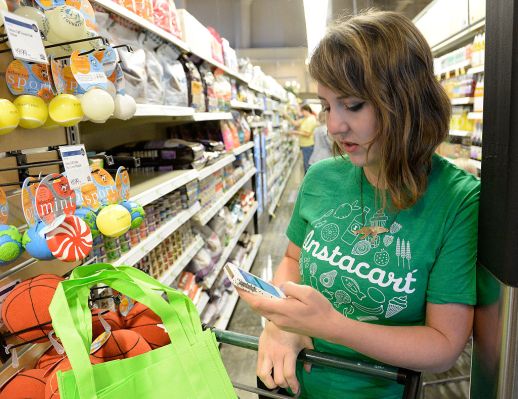Instacart’s accelerating growth in 2022 could clear the final brush between it and a public offering, providing the technology and startup market with something akin to a countdown to the U.S. IPO window being kicked open by a major unicorn.
The foodstuff delivery service has expanded its offerings over time to include a grocer-focused software platform and advertising services. Its expanded product mix and growth in consumer demand for its core grocery delivery service helped Instacart grow more rapidly in Q2 2022 than it managed in the first quarter of this year, The Wall Street Journal reports.
With Instacart expected to go public later this year, news of its improving financial performance sets the stage for an S-1 filing.
Instacart — a pandemic-accelerated former startup and present-day private company worth a few dozen billion dollars — would make a splash with an IPO no matter the business climate. But with the U.S. IPO market utterly frozen (and international waters hardly less glacial) Instacart’s public-market debut will carry extra weight.
Let’s map the company’s Q2 as we now understand it and run some valuation math to get a grip on what Instacart may face when it does file, price and float.
Instacart’s Q2 2022
When I was a lad, I was told that to go public, a company needed to have $100 million in trailing revenues and a few quarters of improving profitability on the books. That scale and demonstrated operating leverage meant that the concern was sufficiently mature to go public.
Naturally, high-growth companies, often tech-focused, tore up that rulebook. By posting faster revenue expansion than other public-market hopefuls, they could list without the theoretically requisite historical profit record. Instacart, notable for its rapid-fire growth during the first years of the COVID-19 pandemic, is oddly enough looking older-school than we would have expected from a venture-backed unicorn.
The Wall Street Journal’s report on Instacart’s second quarter contains a wealth of data, which I have summed up for you below with other data points from prior reporting included for context (new WSJ-sourced information is in bold; YoY references year-over-year growth):
- 2020 revenue: $1.5 billion, up 330% YoY
- 2021 revenue: $1.8 billion, up 15% YoY
- Q1 2022 revenue growth: 15% YoY
- Q1 2022 order volume: up 10%
- Q2 2022 revenue: $621 million
- Q2 2022 revenue growth: 39% YoY
- Q2 2022 order volume: more than 60 million, up 25% YoY
- Q2 2022 order volume: up 21% to $7.1 billion
- Profitable in Q2, though without clarification regarding type of profit.
Doing the math for us, a $621 million Q2 2022 puts Instacart on an annualized run rate of just under $2.5 billion, a huge gain over the company’s 2021 result. Recall that Instacart’s latest 409a (internal) valuation put a $24 billion price tag on the company, a reduction from its prior worth of around $39 billion.
At a $24 billion price, Instacart is valued today at around just under 10x its current annualized revenues. That may be slightly high in the present market if Instacart was still losing money. However, the company has a few things up its sleeve that could make a 10x multiple — more associated with SaaS companies than on-demand consumer services that are more macro-sensitive — potentially palatable:
- Accelerating revenue growth from Q1 to Q2, showing that the company is not in a terminal top-line expansion deceleration. In turn, that implies strong future growth and, therefore, cash flows.
- Profitability in a market that is said to put a premium on stability.
The two points work in tandem. Back in 2021, accelerating growth with expanding losses would have been tolerated, if not implicitly celebrated, as risk-on investors coveted bold bets toward huge futures. In 2022, accelerating growth is welcome, but paired with profitability (perhaps even the bullshitty adjusted EBITDA), Instacart can tout future scale without the need to raise capital to fund its growth. That tells investors that debt or dilution via share sales is less likely.
And we can see in its data hints of other efforts coming good. Yes, the number of orders that Instacart managed in Q2 rose roughly in tandem with its GMV expansion. But more importantly, its revenue grew more quickly than either delivery-focused component of its business. That could mean that Instacart’s other business efforts, namely software and advertising, could be adding materially to its growth. Because those products could sport stronger gross margins than delivery proper, the company could also have a revenue-quality story to tell investors to boot.
Instacart going public this year is a bold effort. Less gritty companies would find some way to dodge the process. But with the above numbers and a new valuation, Instacart may be prepared to thread the needle. Of course, questions remain. But some black ink matched with top-line acceleration is one hell of a mix.
